#ampere electric scooter
Text

#best electric vehicles in hyderabad#best e bikes#electric scooter showrooms in hyderabad#best electric scooters in hyderabad#ampere greaves scooters in hyderabad#ampere greaves showroom in hyderabad#scooty electric#electric scooters#electric scooter price#electric scooters in hyderabad#electric biokes in hyderabad#e bikes#eco bikes#e scooter#electric bikes#ampere electric scooter#electric two wheelers#hero electric bike#electric bike in india
2 notes
·
View notes
Text
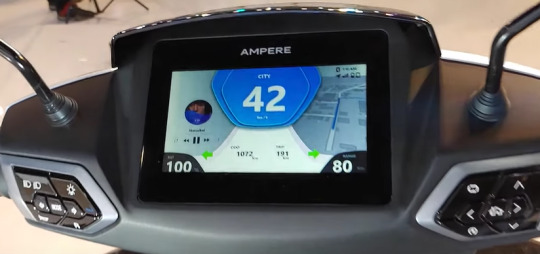
Ampere NXG Electric Scooter
#electric scooter#ampere electric scooter#Ampere NXG Electric Scooter#electric two wheeler#electric vehicles
0 notes
Text
Exciting Deal Alert! Ampere Electric Scooter now ₹9,000 off! Grab Yours Now!
Ampere Electric Scooter
Rev up your excitement for the end of 2023 with a thrilling opportunity to make your entry into 2024 unforgettable! The Ampere Electric Scooter, renowned for its exceptional quality, is rolling out an electrifying deal that will leave you on the edge of your seat. Buckle up as we delve into the heart-pounding details of this spectacular offer!
Ampere Electric Scooter…
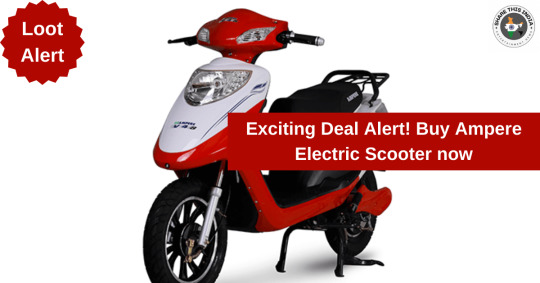
View On WordPress
0 notes
Text
Ampere Primus Electric Scooter Launched In India with driving range of more than 100KM
Greaves Electric Mobility has introduced the new Ampere Primus electric scooter in India, with a price tag of Rs 1.10 lakh (Ex-Showroom, India).
Booking Amount for Ampere Primus electric scooter is only Rs 499.
This electric scooter comes with top speed of 77km/h and can accelerate from 0 to 40km/h in less than 5 seconds.
Greaves Electric Mobility has introduced the new Ampere Primus electric scooter in India, with a price tag of Rs 1.10 lakh (Ex-Showroom, India). Furthermore, booking for the new electric scooter are already…

View On WordPress
#ampere electric scooter#ampere electric scooter price#ampere primus booking#ampere primus features#ampere primus price#ampere primus range#ampere primus specifications#ampere primus top speed#electric scooter
0 notes
Text
Ampere launched affordable electric scooter at Rs 1.1 lakh ex-showroom
India’s electric scooter manufacturing company Ampere Electric uas launched its new electric scooter as the name of Ampere Nexus which is available at Rs 1.1 lakh to Rs 1.2 lakh.
Ampere Nexus is made in India affordable electric scooter
The price of Ampere Nexus is available at Rs 1.1 lakh to Rs 1.2 lakh
It offers 3 kWh long range battery
The Ampere Nexus has been made under the NXG concept…

View On WordPress
0 notes
Text
Bounce Infinity E1 vs. Ampere Magnus EX Comparison – Which is the Best Electric Scooter?

Electric scooters are swiftly carving their niche in the Indian commuting landscape, offering eco-friendly and cost-effective transportation solutions. As the market burgeons, two standout models, the Bounce Infinity E1 and the Ampere Magnus EX, have captured the attention of electric scooter enthusiasts across the nation.
Price and Ownership Options: The Bounce Infinity E1 hits the market with a competitive price tag of Rs. 79,999, while the Ampere Magnus EX stands slightly higher at Rs. 81,900. Notably, the E1 introduces an innovative ownership model, allowing buyers to purchase the scooter without the battery and charger, significantly reducing the upfront cost. On the other hand, the Magnus EX follows a conventional ownership approach without introducing any unique subscription plans.
Charging Solutions: Bounce revolutionizes the charging experience with its battery-swapping solution, enabling users to exchange depleted batteries for fully charged ones at swapping stations. However, this convenience comes with associated costs. Alternatively, the Magnus EX offers a standard home-charging experience without monthly commitments.
Performance and Ride: The Bounce Infinity E1 boasts impressive acceleration and a claimed top speed of 65kmph, ideal for inner-city commuting. In contrast, the Magnus EX provides a balanced approach with commendable speed and range, catering to diverse riding preferences.
Features: Both scooters offer rich feature sets catering to various user needs. The E1 surprises with innovative modes and connectivity features, while the Magnus EX impresses with practicality and premium design aesthetics.
Conclusion: The Bounce Infinity E1 and the Ampere Magnus EX cater to different segments of the market, each bringing unique propositions to the table. While the E1 appeals with its innovative ownership model and charging solutions, potential buyers should consider the practicality and associated costs. Conversely, the Magnus EX focuses on style, practical features, and impressive range, offering a balanced approach without the complexities of subscription plans.
Ultimately, the choice between these electric scooters hinges on individual preferences, usage patterns, and priorities. Whether opting for the innovative Bounce Infinity E1 or the stylish Ampere Magnus EX, both contribute to the paradigm shift towards sustainable commuting solutions in India.
Also Read
Reviewing The Specs Of Ather’s Latest Tech-Infused Family E-Scooter – Ather Rizta
0 notes
Text
Ampere Electric Scooter: Electric scooters have become increasingly popular as people seek eco-friendly and cost-effective alternatives for urban commuting. Among the myriad of options available in the market, Ampere Electric Scooter stands out for its innovative design, advanced features, and exceptional performance. In this article, we delve into the world of Ampere Electric Scooter, exploring its benefits, features, user reviews, maintenance tips, and more.
#Ampere V48 Model#Customized Vehicles#E-Bikes#Electric Scooters#Environmentally Friendly Transportation.
0 notes
Text
Celebrating India’s EV Journey
Today is World EV Day. The day is observed every year with special awareness campaigns being organized globally to educate people about the benefits of electric vehicles.

While China is the world’s largest EV market, India is the second largest and most promising. Driven by incentives by the Centre and the states, the adoption of EVs is gaining momentum. India’s EV sector is attracting increasing investments in battery technology, charging infrastructure and product options. Some of the biggest brands in the EV space include Tata Nexon in cars, the Mahindra Treo in three-wheelers and Hero Electric and Ola in scooters. In addition, there are a whole lot of startups that are working on various aspects of the EV eco-system.
In this article, Autocar Professional takes you through India’s EV landscape with leaders in the segment commenting on sustainable mobility and a zero-emission future.
Meanwhile, a recent study by Castrol study has highlighted key insights on EV readiness for markets, carmakers, and consumers. Its global survey ‘Switching ON the rEVolution’ covering 10,000 consumers and 100 leaders from car manufacturers in 10 key global markets, including India suggests that 44 percent of consumers surveyed in India are considering an EV for their next vehicle purchase while 55 percent are still considering an ICE vehicle.
Shailesh Chandra, MD, Tata Motors Passenger Vehicles and Tata Passenger Electric Mobility

World EV Day is indeed a special day for us, as we look back and reflect on our journey so far. We are proud to lead the EV market in India, with a lion’s share of 88 percent. As early entrants, we have shaped the market and seen it grow with Nexon EV and Tigor EV. We have over 40,000 Tata EVs plying on road. We have also established Tata UniEVerse, a one of its kind EV ecosystem, which is further propelling the EV adoption.
Santosh Iyer, VP-Sales & Marketing, Mercedes-Benz India

Mercedes-Benz Indian has a very aggressive EV roadmap for the Indian market with three new luxury EVs. We pioneered luxury EVs in India with the EQC in 2020, which received good response from the early adopters in the luxury segment. EQC’s acceptability and market success set the ground for other brands to foray into the luxury EV segment.
Suman Mishra, Mahindra Electric Mobility

We celebrate India’s electrification journey. At Mahindra Last Mile Mobility, we are committed to promoting sustainable motoring with zero emission products. I am confident that with our collective efforts, we can enable a green and smarter tomorrow for India.
Warren Harris, CEO, Tata Technologies

Tata Technologies’ vision of Engineering a better world embodies our commitment to providing sustainable solutions especially in the rapidly growing Electric Vehicle Market. The transition to EV is also an opportunity and would also be synonymous with a move to connected vehicles enabled by ADAS and digital customer experience solutions. Tata Technologies offers end-to-end solutions for engineering, manufacturing support, and customer experience solutions for EVs globally. We have developed an elaborate EV ecosystem through alliances and partnerships across the world, including an alliance with MIH Consortium which enables us to leverage the EV ecosystem to deliver best value for our Customers.
Nagesh Basavanhalli, Executive Vice Chairman, Greaves Cotton

Greaves Electric Mobility owned Ampere is one of the fastest growing electric two-wheeler brands in the Country while the company also operates/owns the rapidly growing e-rickshaw brand Ele (Bestway) and the Teja (MLR Auto) range of L5 category three wheelers. Together the portfolio offers a strong value proposition to electrifying the way people and goods move across our country.
Mahesh Babu, CEO, Switch Mobility India, COO, Switch Mobility

To meet India’s global commitment to become Net Zero by 2070, we need to prioritize not just public transport, but public transport with zero tailpipe emissions. Electric buses are clearly the best and obvious solution to accelerate decarbonisation with increasing mass mobility. It is this imperative that guides us at Switch Mobility — to help India attain its ambitious Net Zero target by offering the society with smart, clean mass mobility solutions that are also technologically advanced, safe and comfortable for passengers. Our vision is to transform mass mobility across cities and highways, and bring about a clean revolution in the way people travel. I take the opportunity on World EV Day 2022 to invite partners and people who share the same vision to jointly achieve this critical transition.
Balbir Singh Dhillon, Head of Audi
We have installed 100+ chargers pan-India and 16 high-speed 50kW chargers across our dealerships located across strategic highways within the country. In line with our global plans to be all-electric by 2033, we are aiming to achieve about 15 percent of our India sales from EVs by 2025–2026. It’s time we start to care for the climate. I think the sooner we realise we are responsible for it, the better it is for all.
Read More: https://www.tatatechnologies.com/en/media-center/celebrating-indias-ev-journey/
2 notes
·
View notes
Text
Important Factors to Consider When Selecting E-Scooter Portable Battery Pack Suppliers
As electric scooters (e-scooters) become increasingly popular for urban mobility, the demand for reliable and Efficient Portable Scooter Battery Packs is on the rise. Whether you're a manufacturer, a business owner, or an individual seeking to upgrade your e-scooter, finding the right battery pack supplier is crucial. In this blog, we'll explore the key considerations for selecting e-scooter portable scooter battery pack suppliers and affordable lithium-ion battery suppliers to ensure you get the best performance and value for your investment.
1. Battery Quality and Specifications
Capacity and Range: Ensure the battery pack offers sufficient capacity (measured in ampere-hours or Ah) and range to meet your e-scooter’s requirements. A higher capacity generally means a longer riding range.
Voltage Compatibility: Verify that the battery pack matches the voltage requirements of your e-scooter. Incorrect voltage can affect performance and safety.
2. Supplier Reputation and Experience
Industry Expertise: Choose suppliers with a proven track record in providing e-scooter battery packs. Experience in the e-scooter industry can be an indicator of quality and reliability.
Customer Reviews and Testimonials: Research customer feedback and testimonials to gauge the supplier’s reputation and product performance.
Website: https://jttelectronics.com/
0 notes
Video
youtube
Excited to share the successful launch of Ampere Electric's new scooter, Nexus!
🛵✨ Did you know that Ampere Electric was one of the pioneers in the Indian electric vehicle market, having launched its first electric scooter way back in 2008?
This project was a thrilling journey for Team MadMaze, from finding the perfect venue to setting up an immersive audio-visual experience and the grand ribbon-cutting ceremony. Watch the behind-the-scenes magic in our latest video!
#youtube#AmpereElectric NexusLaunch ElectricRevolution TeamMadMaze EventExecution BehindTheScenes madmaze mmcrew
0 notes
Text
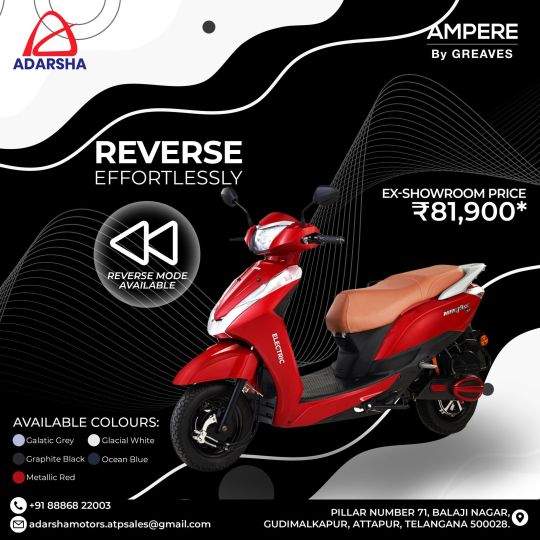
#ampere electric two wheelers in hyderabad#electric two wheelers in hyderabad#best electric two wheelers in hyderabad#best electric scooters in hyderabad#electric scooters in hyderabad#best electric scooty in hyderabad#electric scooty in hyderabad#best electric bikes in hyderabad#electric bikes in hyderabad#best e bikes in hyderabad#e bikes in hyderabad#best ev in hyderabad#ev in hyderabad#best electric vehicle in hyderabd#electric vehicle in hyderabad#electric scooter showrooms in hyderabad#ampere greaves scooters in hyderabad#ampere greaves showroom in hyderabad#scooty electric#best e bikes#electric scooters#electric scooter price#eco bikes#e scooter#electric bikes#ampere electric scooters#hero electric bike#electric bike in india#best battery scooter
0 notes
Text
Ampere Nexus vs Ather 450X Comparison
As India's electric vehicle (EV) market continues to expand, consumers are presented with an array of options. Two prominent players in the Indian electric scooter segment are the Ampere Nexus and the 450X. This comprehensive comparison will delve into the key features, specifications, and performance of these two electric scooters to help you make an informed decision.
Design and Aesthetics
Ampere Nexus, a product of the renowned Ampere brand, is a popular choice among eco-conscious commuters. With a starting Ampere Nexus price of ₹1.09 lakh, the Nexus boasts a range of 136 km on a single charge, making it a viable option for daily urban commutes. Ather 450 X, on the other hand, is a premium electric scooter offered from Ather Energy. Priced at around ₹1.50 lakh, the 450X sets itself apart with its advanced features and performance (all prices mentioned are ex-showroom).

Regarding design, the Ampere Nexus and the Ather 450X offer a sleek and modern aesthetic. The Nexus features a sporty and compact profile, while the 450X sports a more angular and aggressive look. Both scooters come in a range of vibrant colour options, allowing customers to choose a shade that suits their style.
Performance Comparison
In terms of performance, the Arther 450X takes the lead. With a top speed of 85 km/h and a range of up to 116 km, the 450X outpaces the Ampere Nexus, which has a top speed of 93 km/h and a range of 136 km. The 450X's faster acceleration and responsive handling make it a more engaging riding experience for those seeking a sportier, more dynamic ride.

The Ampere Nexus, however, shines in its practicality and ease of use. The Nexus offers a convenient and hassle-free riding experience with its push-button start. Additionally, the Nexus boasts a more straightforward charging process, with a charging time of 3.3 hours, compared to the 450X's 8.3-hour charging time.
Ampere Scooty in India and Market Positioning
When it comes to the Ampere scooty in India, the Nexus stands out as a more affordable option in the Ampere lineup. Compared to the premium positioning of the Ather 450 X, the Ampere Nexus caters to a wider range of consumers looking for a reliable and cost-effective electric scooter for their daily commute.
Conclusion
Choosing between the Ampere Nexus and the 450X will ultimately depend on your specific needs and preferences. If you prioritise a more extended range, practical features, and a more wallet-friendly price tag, the Ampere Nexus might be the better fit. However, if you're willing to invest in a more premium electric scooter with superior performance and a sleeker design, the Ather 450 X could be the superior choice.
Regardless of your decision, the Ampere Nexus and the 450X are compelling options in the Indian electric scooter market, catering to eco-conscious consumers' diverse needs and preferences. So make an informed decision after you compare scooters in India.
0 notes
Text
10,000 रूपये सस्ता हुआ Ampere Electric Scooter
Ampere Electric Scooter : दिन प्रतिदिन इलेक्ट्रिक व्हीकल्स की डिमांड भारतीय बाजार में बढती जा रही है और उसी हिसाब से प्रत्येक इलेक्ट्रिक व्हीकल्स निर्माता कंपनी अपने आपको बाजार में स्थापित करने में लगी हुई है। ऐसे में भारतीय बाजार में EV की बढती डिमांड के बीच अपनी सेल बढाने के लिये Greaves Electric Mobility कंपनी ने अपने Ampere Electric Scooter का मूल्य 10,000 रूपये तक कम कर दिया है।
Follow us…
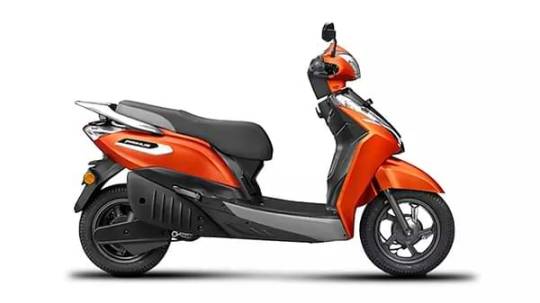
View On WordPress
0 notes
Text
Top Electric Scooters Under 1 Lakh: Affordable and Eco-Friendly Rides
In today’s world, where sustainability and cost-effectiveness go hand in hand, electric scooters have become a popular choice for urban commuters. With the increasing demand for eco-friendly transportation, finding a budget-friendly electric scooter that doesn’t compromise on performance can be challenging. If you’re looking for the best electric scooters under 1 lakh, you’ve come to the right place. This blog will guide you through some of the top options available, highlighting their features, benefits, and why they make an excellent choice for your daily commute.
Why Choose an Electric Scooter?
Before diving into the specifics, let’s understand why electric scooters are gaining popularity.
1. Environmental Benefits
Electric scooters produce zero emissions, making them an eco-friendly alternative to traditional petrol-powered vehicles. By choosing an electric scooter, you contribute to reducing air pollution and combating climate change.
2. Cost-Effectiveness
Electric scooters are cheaper to operate and maintain compared to conventional scooters. With lower fuel costs and minimal maintenance requirements, they offer significant savings in the long run.
3. Convenience
Electric scooters are ideal for city commuting. They are lightweight, easy to maneuver, and can be parked in small spaces. Plus, they offer a quiet and smooth ride, making your daily commute more enjoyable.
Top Electric Scooters Under 1 Lakh
Here’s a look at some of the best electric scooters you can buy for under 1 lakh.
1. JITENDRA EV JMT 1000HS
Features:
Range: 90-100 km on a single charge
Top Speed: 51 km/h
Charging Time: 3-4 hours
Battery: Lithium-Ion
Why Choose It? The JMT 1000HS offers an excellent balance of range, speed, and affordability. Its lithium-ion battery ensures a quick charge, and its sturdy build makes it a reliable choice for daily commutes.
2. Hero Electric Optima E5
Features:
Range: 55-65 km per charge
Top Speed: 42 km/h
Charging Time: 4-5 hours
Battery: Lithium-Ion
Why Choose It? Hero Electric is a trusted name in the electric vehicle industry. The Optima E5 is known for its durability and performance, making it a favorite among budget-conscious commuters.
3. Okinawa Ridge Plus
Features:
Range: 84 km per charge
Top Speed: 45 km/h
Charging Time: 2-3 hours
Battery: Lithium-Ion
Why Choose It? The Okinawa Ridge Plus is known for its impressive range and quick charging time. It’s an excellent option for those who need a reliable scooter for longer commutes.
4. Ampere Magnus Pro
Features:
Range: 70-75 km per charge
Top Speed: 55 km/h
Charging Time: 5-6 hours
Battery: Lithium-Ion
Why Choose It? The Ampere Magnus Pro offers a higher top speed compared to other scooters in its range, making it suitable for faster commutes. Its robust build and comfortable seating add to its appeal.
Key Considerations When Buying an Electric Scooter
When choosing the best electric scooter under 1 lakh, consider the following factors:
1. Range and Battery Life
Ensure the scooter offers a sufficient range to cover your daily commuting needs. A longer battery life means fewer charges and more convenience.
2. Charging Time
Look for scooters with quick charging capabilities. A shorter charging time ensures your scooter is ready to go when you are.
3. Speed
Consider the top speed of the scooter. If you have a longer commute or need to travel faster, opt for a scooter with a higher top speed.
4. Build Quality and Comfort
A sturdy build and comfortable seating are crucial for a pleasant riding experience. Check the scooter’s design and ergonomics before making a decision.
5. Brand and After-Sales Service
Choose a reputable brand that offers reliable after-sales service and warranty. This ensures you receive support and maintenance when needed.
Conclusion
Electric scooters under 1 lakh offer an affordable and sustainable mode of transportation, perfect for urban commuting. With various options available, it’s essential to choose one that meets your specific needs and preferences. Whether it’s the range, speed, or design that matters most to you, there’s a budget-friendly electric scooter out there to make your daily commute eco-friendly and cost-effective.
1 note
·
View note
Text
Battery Breakdown: Lead Acid vs. Lithium Ion Batteries
Lead acid batteries, Lithium ion batteries
Both lithium-ion and lead-acid batteries function by storing electrical energy through electrochemical processes, but they operate differently in terms of how they extract and release electrons. Lithium ion batteries function by discharging negative and positive ions from the element lithium between electrodes. On the other hand, lead acid batteries follow the same procedure but with a different material.
Apart from their different materials, these batteries also vary in performance and cost. Lead acid batteries are comparatively cheaper than lithium-ion batteries. When seeking home energy storage, you can choose from a wide range of batteries. Let’s go through a comparison of these two most commonly preferred battery options based on their usage and importance.
Lead Acid vs. Lithium Ion Batteries: Uses
Lead Acid and Lithium Ion batteries are differently crafted to serve varying applications and uses. The uses of lead acid and lithium-ion batteries are as follows:
Lead Acid Batteries
Lead acid batteries are highly used in automotive industries, offering the required power for lighting, starting, and ignition systems.
Lead acid batteries are installed to store additional energy that has been produced by renewable sources, which are later used to power businesses and homes as and when required. Hence, they are the perfect selection to store renewable energy sources as they come with easy maintenance, low prices, and longer lifespan.
Lead acid batteries are also installed to provide backup power to communication infrastructure and cell towers.
Lead acid batteries are extremely useful in marine applications, providing the needed power for communication systems, onboard lighting, and multiple electrical equipment.
Lithium Ion Batteries
Lithium batteries offer low drain current, long life, and high energy density and, hence, are used in digital cameras for effective functioning. Most DSLRs and mirrorless cameras get their power from lithium-ion batteries.
As lithium-ion batteries are rechargeable, they are highly preferred for laptops, smartphones, and other portable electronic devices.
Small lithium-ion batteries are installed in watches. With their 3 Volt capacity, they offer a longer lifespan.
Lithium-ion batteries are also used in surveillance systems and alarms in remote locations.
With the enhanced reliability and mobility technology of lithium-ion batteries, they offer fast charging, expandable run time, and size customisation in electric wheelchairs, mobility scooters, and stairlifts.
Lead Acid vs. Lithium Ion Batteries: Importance
The importance of using lead acid and lithium ion batteries for multiple power needs is listed below:
Lead Acid Batteries
The lead-acid battery's weight-to-energy ratio is relatively high. Yet, its affordability and ability to handle high surge currents make it popular for applications requiring capacity overload and handling concerns, typically above 10 Ah.
While lead-acid batteries exhibit lower energy density compared to modern rechargeable batteries, their capacity to deliver high surge currents results in a notable power-to-weight ratio for the cells.
Consequently, they have emerged as the industry standard in automotive applications, particularly as the primary power source for starting, lighting, and ignition (SLI) systems in vehicles, capable of delivering peak currents of approximately 450 amperes.
Lithium Ion Batteries
Lithium batteries offer up to ten times the lifespan of lead-acid batteries. They retain 80% of their rated capacity after 2,000 cycles. Lithium-ion batteries last longer than the average two-year lifespan of lead-acid batteries.
Lithium batteries require no active maintenance. They come with longevity on a one-time purchase.
Lithium batteries offer versatility due to their ability to charge and discharge at high rates. They minimise downtime with fast charging and provide bursts of power when needed. In contrast, lead-acid batteries require staged charging over longer periods and are less efficient during high discharge periods, making them less versatile compared to lithium batteries.
Lithium batteries excel in efficiency, particularly under high-stress conditions, as they are less affected by temperature fluctuations and energy depletion. Therefore, lithium batteries are the perfect choice for applications requiring more battery usage or operation in extreme weather conditions.
Lithium batteries offer greater energy capacity. Compared to other battery chemistries, lithium provides equivalent or greater energy in less than half the weight and size, offering increased flexibility and simplified installation.
Lead Acid vs. Lithium Ion Batteries: Major Differences
To acknowledge the major differences between Lead Acid vs. Lithium Ion Batteries, refer to the table given below:
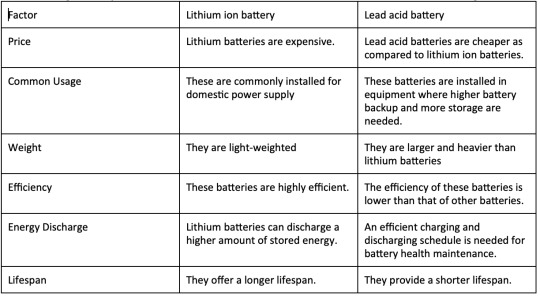
Conclusion
Both lithium ion and lead acid batteries are used for energy storage and power supply. The applications, cost, size, and lifespan differ. Hence, before choosing the right type of battery, carefully consider the application you are purchasing for. Also, they must be bought from the best suppliers like LnTSufin who provide batteries from top brands to ensure longevity and warranty.
0 notes
Text
MG Motors Set To Launch 2 New EVs Under ₹15 Lakh, Backed by JSW’s Investment Boost!
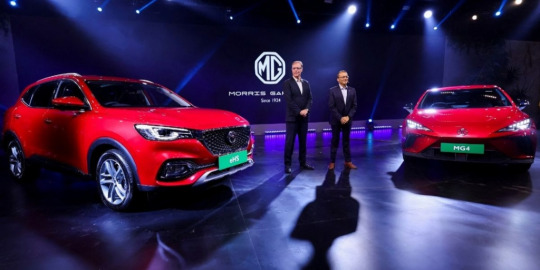
MG Motor, in collaboration with the JSW Group, is gearing up to reshape India's electric vehicle (EV) market with an ambitious strategy aimed at capturing the mass-market segment. Bolstered by fresh investment, MG Motor is set to introduce two affordable EV models, signaling its intent to challenge established players and cater to the growing demand for electric mobility in the country.
The upcoming EV offerings from MG Motor are poised to redefine the segment, with a focus on affordability and practicality. The introduction of a five-door SUV and a compact MPV, priced below Rs 15 lakh, underscores the brand's commitment to making electric vehicles accessible to a wider audience. These models, based on the versatile E260 EV platform, are designed to meet the diverse needs of Indian consumers, from urban commuters to family vehicles and fleet operators.
Of particular interest is the innovative design of the compact MPV, drawing inspiration from the successful Wuling Cloud EV. With dimensions akin to popular models like the Maruti Ertiga and Renault Triber, this electric MPV aims to address a growing segment of the market with its blend of practicality, comfort, and eco-friendliness.
MG Motor's EV strategy also emphasizes localization and expansion plans, with a focus on scaling up local manufacturing, including battery production, at its Halol facility. This move not only enhances cost competitiveness but also underscores the brand's commitment to sustainable growth and contributing to India's electric mobility ecosystem.
The strategic partnership with the JSW Group further strengthens MG Motor's position in the Indian automotive market, enabling synergies in sourcing, production, and the introduction of eco-friendly mobility solutions. Together, the partners are poised to drive innovation and accelerate the adoption of electric vehicles in India.
As the automotive landscape evolves, MG Motor's strategic pivot towards electric mobility represents a significant step towards a more sustainable future. With a comprehensive expansion plan and a commitment to Indianization, supported by the JSW Group, MG Motor is poised to make a lasting impact on India's electric vehicle market, capturing the imagination of consumers and driving the transition towards cleaner, greener transportation.
Also Read
The Upcoming Ampere Nexus Electric Scooter Successfully Finishes Its Journey From Kashmir
0 notes